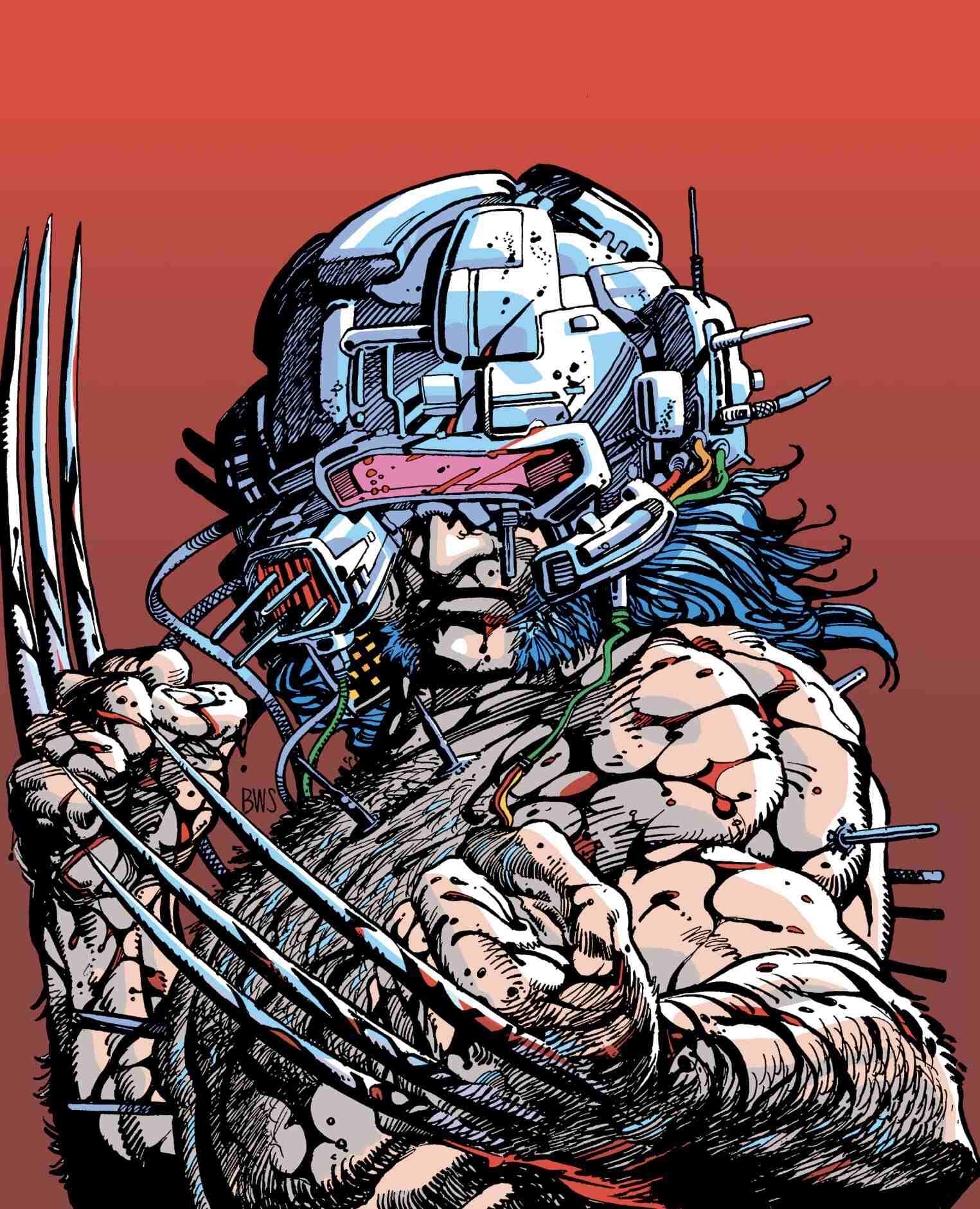
Weapon X Review | How Logan became Wolverine
Author
Year
Format
By
I’m the best there is at what I do but what I do best isn’t very nice.
Wolverine
In the 1990s, Marvel decided to tackle one of the mysteries of its universe: the origins of Wolverine. After years of stories that added more confusion than clarity to his past, the character had lost some of his essence. The task of bringing order is entrusted to Barry Windsor-Smith, and the result is Weapon X, a raw work that delves into the depths of Logan’s torment.
Published in twelve episodes between 1991 and 1992 in the Marvel Comics Presents series, Weapon X goes beyond the typical superhero comic and reinvents the concept of origin story: Windsor-Smith does not limit himself to revealing the character’s past, but uses the story to explore themes such as control and loss of identity, fitting perfectly into the context of Weapon X an era in which pessimism and cynicism dominated the comic book landscape.
The introduction of an origin story, however, does not answer all the questions, but rather raises new ones, thus giving Wolverine that enigmatic dimension that still makes him one of Marvel’s most complex characters today.
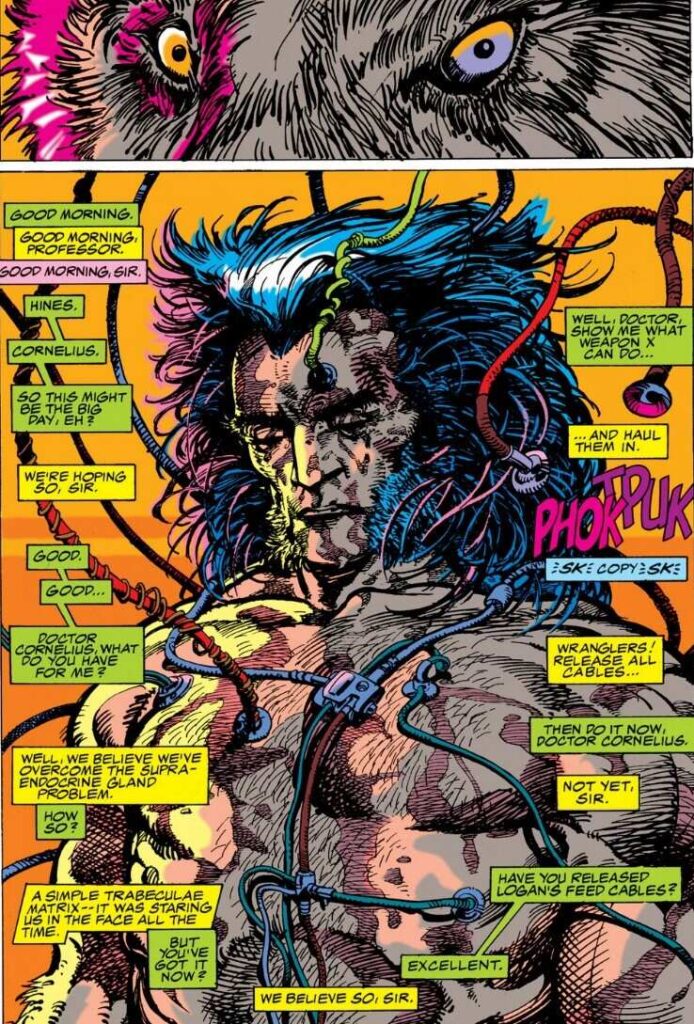
Logan as a passive character
The plot of Weapon X revolves around a Logan stripped of his identity, reduced to a mere patient or experiment, without ever being called Wolverine. Inside a secret laboratory, Logan’s kidnapped and brutally transformed by a group of cynical and unscrupulous scientists, members of the secret Weapon X program. The project involves creating a perfect war machine, fusing adamantium to his skeleton. However, the operation, led by the enigmatic Professor and supervised by Doctor Cornelius and Doctor Hines, turns into an endless nightmare, while Logan’s imprisonment pushes him to the brink of madness.
Windsor-Smith does not focus on the usual heroic transformation of the character, but on a raw and desperate story that highlights the most brutal and inhuman side of the experiment. The story develops almost entirely in the laboratory, where Logan’s more a study subject than a human being. He will perform some active action only when he manages to escape. An event that will free him, but which will not at all resolve the mental situation in which the scientists have placed him: Logan still does not emerge victorious. It’s the three scientists, then, that play the role of protagonists – and at the same time also of the antagonists – while offering an excuse for a psychological analysis of man.
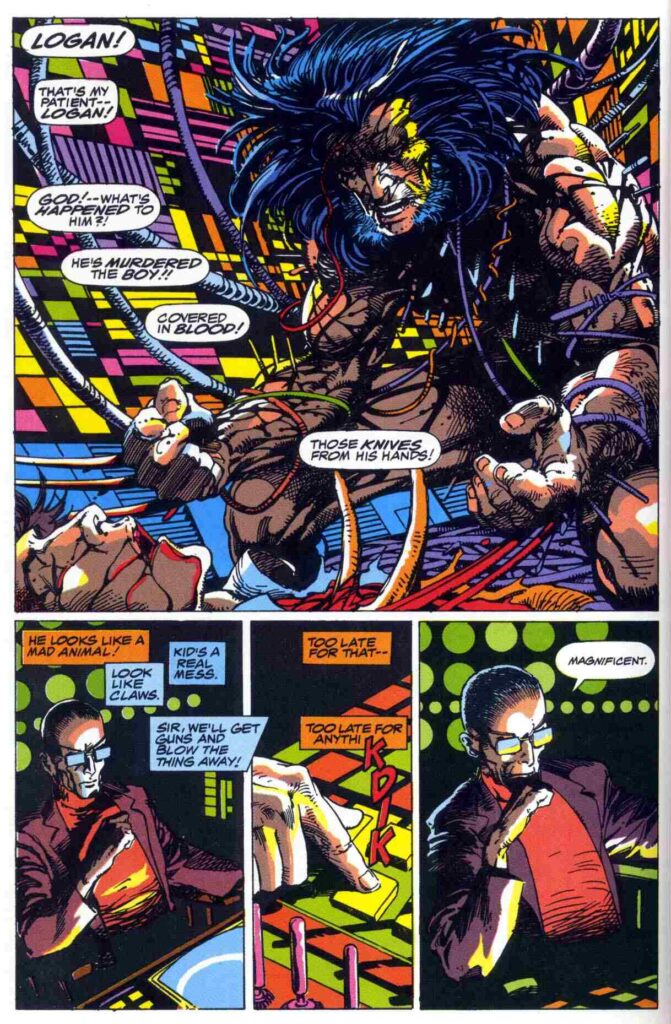
The three represent three faces of the moral ambiguity of those who hide behind the excuse of a “scientific experiment”. Cornelius is the classic scientist who begins with ethical doubts, but is gradually absorbed by the system. Hines, on the contrary, seems to feel empathy for Logan, but remains an active part of the project, justifying herself behind the obligation of having to follow orders, while the Professor embodies the absolute coldness of the organization.
Anatomy of the Beast
Weapon X is not the classic superhero story: it is a descent into the depths of human horror, in which the protagonist loses even the central role.
Windsor-Smith tears apart the concept of the hero with a tale of power out of control, of men who set themselves up as gods without understanding that their own creation will devour them. Art follows chaos: panels, splash pages and a calibrated use of color make the pain tangible. Physical torment, acute and precise, becomes the protagonist of tables that force the reader’s gaze to linger, to experience every moment of torture. But it’s not sadism for the sake of it: Windsor-Smith knows how to handle every scene with chilling elegance, transforming violence into a study of the human body – and the absence of hope.
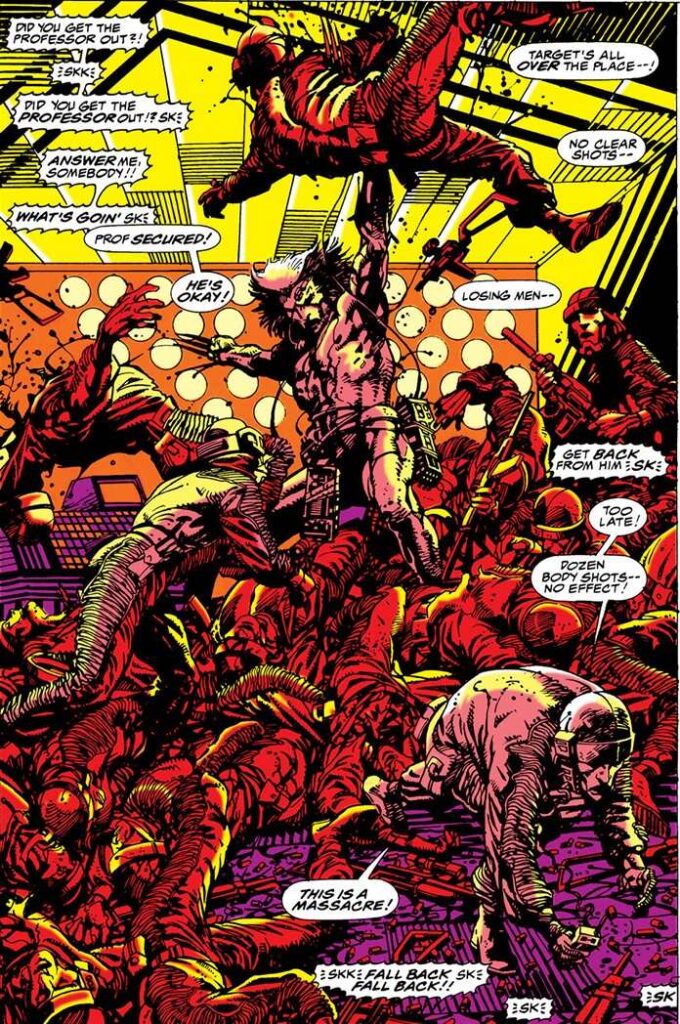
The narrative also follows this thin line: Logan, reduced to a living experiment, seems to disappear, becoming a pure target of blind brutality. The only reality is pain, an echo that is amplified through captions that do not illustrate the action, but throw us into the mind of his executioners. They are the ones who build the rhythm of the story, the constant tension of those who play God with a beast which is ready to awaken at any moment.
Windsor-Smith thus explores the concept of lost identity and dehumanization, erasing the difference between scientist and monster. The real horror lies in the apparent normality with which Logan’s suffering is transformed into data, graphs and experiments.
The Illusion of Freedom
Hell is comin’.
Professor in Weapon X
Weapon X is a journey to hell and back for Logan, but without ever finding true redemption. Despite the apparent escape that closes the story, the real prison is mental: Logan remains trapped in his traumas, haunted by the voices of the scientists who created him. The graphic and narrative brutality of the ending leaves a bitter aftertaste and reminds us that, for Wolverine, the fight never really ends.
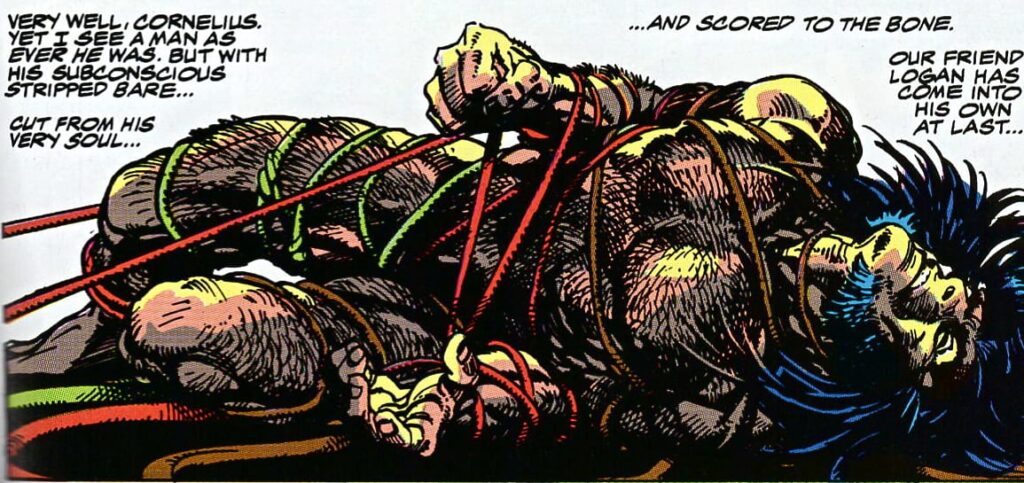
Grant Morrison will later establish that Weapon X actually means Weapon Ten, so the implications of Windsor-Smith’s story certainly do not end there, neither on an editorial level nor for the readers. Logan’s past has been for years a deep well from where Marvel comics kept on dragging out stories.
Thus, Weapon X’s conclusion is thus deliberately ambiguous. As Logan runs through the snow — an ending very similar to another Logan origin story, Origins — covered in blood and ice, Windsor-Smith insinuates that Logan will never truly be freed: every battle he fights in the future is merely an echo of the atrocities he experienced in the lab. Wolverine may have destroyed that place of torture, but his personal hell has no exit.
Tag
Buy a ☕ for Hypercritic









